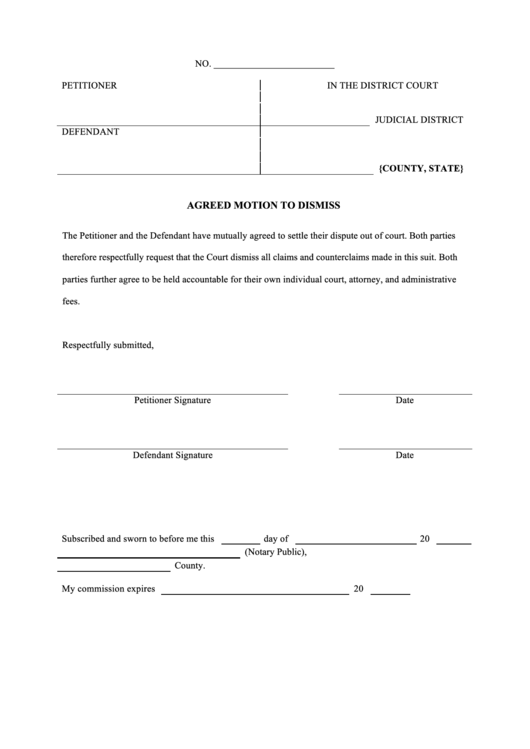

This ground for dismissal is waived if a party files a motion to dismiss and does not raise it, or does not raise it in the responsive pleading.įailure to Join Necessary Party. In a motion to dismiss based on improper service the opposing party must attach a copy of the proof of service, whether or not it was previously filed with the court. The court lacks jurisdiction because of flawed service outside the state or by publication, or because service outside the state was used in an action for which it is not authorized. This ground for dismissal is waived if a party files a motion to dismiss and does not raise it, or does not raise it in the responsive pleading. The court lacks personal jurisdiction over the defendant. The pleadings fail to state any cause of action. The cause of action is a counterclaim which may not properly be interposed in the underlying action. The cause of action is barred by prior arbitration award, collateral estoppel, discharge in bankruptcy, infancy or other disability of the moving party, payment, release or res judicata. In this case the court may not dismiss the action and has the discretion to enter such orders as may be just under the circumstances.Īction is Barred. There is another action pending between the same parties for the same cause of action in a court in any state in the U.S.

The party asserting the cause of action lacks legal capacity to sue.ĭuplicate Action. The court lacks jurisdiction over the subject matter or the cause of action. A defense exists and can be demonstrated using documentary evidence. The following grounds will support dismissal of a claim or claim(s):ĭocument Establishes Defense. Please see SmartRules for up-to-date guides. Note: New York Supreme Court Rules have been updated since this post was written.
#MOTION TO DISMISS FULL#
For a full treatment, including local rules and requirements, see the SmartRules New York Supreme Court Guides for Motion to Dismiss, Response to Motion to Dismiss, and Reply in Support of Motion to Dismiss. I'm not in Oregon, but I'd imagine a Motion in Opposition would be most proper for your firm's response to the MTD, u/mcnello.Use this New York Supreme Court Motion to Dismiss introduction for an overview of Motions to Dismiss in New York Supreme Courts. Plaintiff would only file a Motion to Strike/Reconsider once the Court has actually entered in the dismissal. To respond to a MTD, plaintiffs typically file a Motion in Opposition to the Defendant's MTD, not their own MTD.

FRCP 12(b) This is what your opposing counsel has done.Ī Motion to Strike is when the court is asked to "strike from a pleading an insufficient defense or any redundant, immaterial, impertinent, or scandalous matter." FRCP 12(f) A party can also move to strike or reconsider a Court's order (such as granting a Motion to Dismiss). Defendants may move to dismiss for lack of subject matter or personal jurisdiction. A defendant making a motion to dismiss must do so before filing an answer or other responsive pleading, and the motion is generally due when the defendant's answer would have been due.

Check your state's Rules of Civil Procedure as they do vary, but most states model their RCP off of the federal, which distinguishes:Ī Motion to Dismiss (MTD) is is when the court is asked to dispose of some or all of a plaintiff's claims at the beginning of a case.


 0 kommentar(er)
0 kommentar(er)
